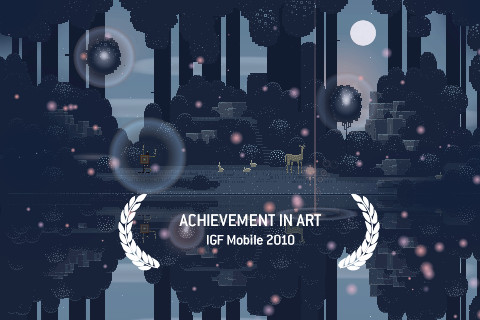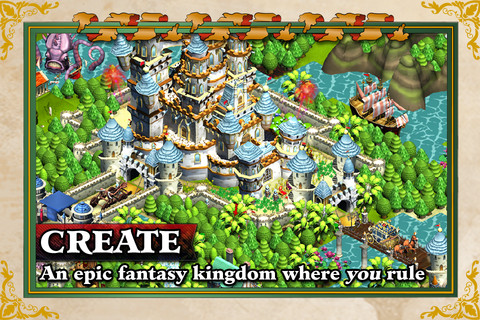 One thing that I do quite a bit of for TouchArcade is attend various conferences. We always hit the big ones like E3 in Los Angeles, along with both WWDC and GDC in San Francisco as well as several smaller conventions throughout the year that often don’t amount to a lot of coverage– But where it’s still great to meet people and have a presence at them. These events (even the mega-corporate ones like E3) have a vibe about them that’s really difficult to describe unless you’ve been to one.
One thing that I do quite a bit of for TouchArcade is attend various conferences. We always hit the big ones like E3 in Los Angeles, along with both WWDC and GDC in San Francisco as well as several smaller conventions throughout the year that often don’t amount to a lot of coverage– But where it’s still great to meet people and have a presence at them. These events (even the mega-corporate ones like E3) have a vibe about them that’s really difficult to describe unless you’ve been to one.
I think the best way to label the feeling would be “inspirational." You’re surrounded by game developers who have all travelled from the farthest corners of the Earth with goals to both promote their existing games, as well as improve their future titles. I’ve seen amazing things come out of game jams, partnerships spring up over coffee, and game ideas being refined via a form of incredibly open peer review over beer and pizza. The whole process is great, and leaves you feeling lucky that you even had the chance to play your small role in witnessing it.
Attendees of these various get-togethers likely know exactly what I’m talking about, and this is wholly the reason why I always encourage developers to attend conventions whenever possible. Sure, they can often times seem like an unnecessary business expense, but can you really put a price on the value of one piece of random feedback that takes your entire project to a whole new level?
Anyway, not having attended GDC Online since 2009 (It was GDC Austin then) I was beyond stoked to take part in the conference. Not very many developers that I’ve worked with in the past were going, but that was OK– the best part about conventions is meeting new people and being absolutely awestruck when they show you what they’re working on.

Sword & Sworcery amazed us at GDC ’10.
GDC is split into several different sub-categories that they call summits. Of particular interest to me was the Smartphone and Tablet Games Summit, which historically at other events has been fairly interesting with compelling panels and speakers covering a wide variety of topics. Looking back at my last visit to Austin, TX I heard a talk from Imangi Studios on their tips for success as well as the guys from Tiger Style detailing their whole creative and business process. These sessions were educational, and while they both cited specific things they did, the advice was all general enough that everyone could take something away to improve their games or how they make their games.
Somehow, over the last two years, GDC Austin Online seems to have shifted to a convention where you go to learn how to be a better game developer to a convention where you go to learn how juice the absolute maximum amount of money out of your player base. Sessions where you listen to developers give newcomers incredibly useful tips and inspirational advice have been replaced by representatives from large free to play development outfits talking about the chilling precision their in-depth analytics package allows them for real-time tweaking to encourage in-app purchasing rates in their farming games.
 Panels on utilizing the touch interface in unique and clever ways have been shifted to presentations on the importance of monetization, and everywhere you look it seems like there’s a different middleware provider anxious to tell you all about their new virtual currency, metrics package, or captive pool of freemium players that they’re willing to sell you if the price is right.
Panels on utilizing the touch interface in unique and clever ways have been shifted to presentations on the importance of monetization, and everywhere you look it seems like there’s a different middleware provider anxious to tell you all about their new virtual currency, metrics package, or captive pool of freemium players that they’re willing to sell you if the price is right.
I felt something was off for the whole convention, until I attended the “Smartphone & Tablet Developer Rant" panel, where Graeme Devine said what I imagine quite a few people (myself included) were thinking: GDC Online isn’t a game developers conference, it’s a data miner and metrics convention. “We’re not game developers here," as a response to the pressure from every direction to monetize every possible avenue in your game where a player might have the opportunity to earn you money in one way or another.
Following the rant, I had quite the discussion with Devine about the current trends in iOS gaming. We both fondly looked back to that initial experience of powering up the original iPhone. According to Graeme, inertial scrolling and pinch to zoom felt “magical," and I’m in complete agreement. We’ve gotten to the point where this 30+ year veteran of the gaming industry has no qualms describing iOS devices as the best gaming platform, as the potential that the iPhone, iPad, and iPod touch have borders on limitless– But the direction that many iOS developers are taking them couldn’t be more depressing.
“Metrics are great," says Devine, referring to the ability of always-on and always-connected devices like the iPhone to constantly report all forms of analytics. Now developers can easily tell when you play, how long you play, when players fail, and much, much more. For a game designer actively looking to improve their game, on the iPhone it’s easy to see that too many players are falling into a pit in your platform game that you never intended to be a challenging obstacle, for instance. That hazard can be easily tuned, and quickly dispatched via an update. Even though metrics can certainly have a spyware-like feel to them, they can also be instrumental in building a substantially better game. Especially a low-budget iPhone game that likely doesn’t enjoy the benefits of a vast army of play testers.

Unfortunately, the way developers are using these tools, and the way far too many business-types are encouraging them to, is to fine-tune revenue streams. Remember, if you’re not buying a product, you are the product— With the success of the free to play model on the App Store, projects are now being built from the ground up with maximum monetization in mind. Developers are evolving their business to even stray from in-app purchases as their primary revenue sources, realizing that there’s just as much (if not more) value in the larger portion of their user base that never buys anything who can be sold and traded with other developers for cross-promotion deals.
Graeme argues that the word “monetization" shouldn’t even be in the game designer’s vocabulary, and offers examples of previous creative works that would never have existed in today’s metrics-hungry world of live tweaking and over-analysis. He proposes a whole host of ridiculous changes that would’ve been made to a game like Pac-Man if power pellets could only be obtained through some kind of in-game credit system. These kind of things would have changed gaming history, and it’s sad to see how thoroughly similar creativity is being stifled in the name of scientifically extracting the most money possible out of the audience.
As a life-long gamer, I find this trend to be incredibly unsettling. I realize the cold hard reality of the business of video games requires developers to turn a profit, but I just hate thinking that the developer who might have come up with the next Sword & Sworcery or Spider: The Secret of Bryce Manor has eternally relegated that project to the back burner in exchange for spending time pouring over analytics and tweaking their latest freemium time sink for optimal average revenue per user.
 I suppose it’s only human nature to try to assign blame for this latest turn of events in the ever-evolving saga of the App Store, but when you think about it, whose fault is it? The ad networks, the virtual currency systems, and the people behind all other forms of metrics-hungry middleware are merely fulfilling a heinously profitable demand. New companies wouldn’t be springing up on a seemingly daily basis offering the next big thing in free to play monetization if there weren’t a pool of developers hungry to hop on board. Similarly, these developers wouldn’t be pulling out all the stops to become fully invested in the free to play model if the money wasn’t there from an ever-growing user base eager to pump proverbial quarters into these games to speed a progress bar.
I suppose it’s only human nature to try to assign blame for this latest turn of events in the ever-evolving saga of the App Store, but when you think about it, whose fault is it? The ad networks, the virtual currency systems, and the people behind all other forms of metrics-hungry middleware are merely fulfilling a heinously profitable demand. New companies wouldn’t be springing up on a seemingly daily basis offering the next big thing in free to play monetization if there weren’t a pool of developers hungry to hop on board. Similarly, these developers wouldn’t be pulling out all the stops to become fully invested in the free to play model if the money wasn’t there from an ever-growing user base eager to pump proverbial quarters into these games to speed a progress bar.
At the end of the day, it’s the customer base that is driving developers down this road. Just like middleware providers, they’re similarly fulfilling a demand. Since the launch of the App Store in 2008, the value proposition of your typical iOS title has continually sliding towards offering more and more for less and less. Simple games like Moto Chaser launched at $5.99, slid to $4.99, and settled at the rock-bottom price of 99¢ in less than two months. 99¢ became the expected price for games for the next few years, and now– Even 99¢ is too expensive. The talks of GDC are also just reflecting this demand, as the entire event agenda is set by an advisory board who is well tuned into all aspects of the gaming industry.
So what can we do to change this? For the first time, I’m really not sure. This is normally where I’d champion the premium priced “full" game experiences with fabulous production values like Infinity Blade and encourage people to actually try to support developers at higher price points in attempt to stop the toxic “I’ll wait for the 99¢ sale" mentality. But, this problem is far bigger than that. The people driving this market are the ones who’ve never read TouchArcade, who don’t follow gaming, and are just downloading the next free to play sensation because the carefully tuned viral aspect of friend recruitment drove them to, they saw it on the charts, or a million other reasons that’d never put them in the same room as someone who cares about a long-winded editorial on monetization as a part of game design.

I think I’d just really like to meet the person who launches one of these games, does their daily in-app purchase to buy a load of in-game currency, spends that all in the course of five minutes, then feels satisfied enough with their purchase to do it again and again and again.
My question to this person is, “Why?"